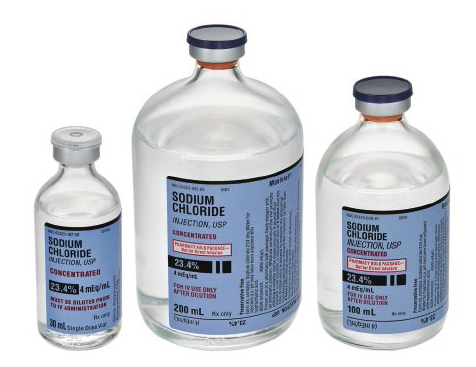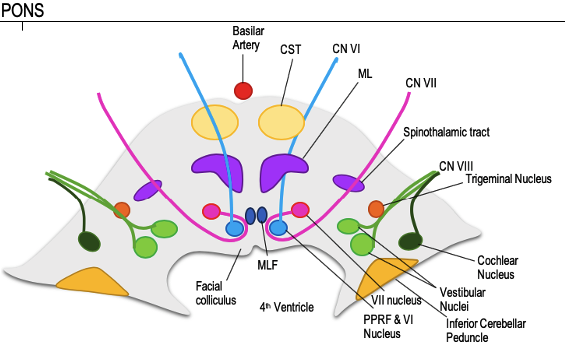
1/
What is the most worthless electrolyte on the BMP, and why is it chloride?
Agree?
A #tweetorial 🧵 to change your mind…
And if you’re thinking, why in the world is this a #neurotweetorial? Read on. #neurotwitter @MedTweetorials
What is the most worthless electrolyte on the BMP, and why is it chloride?
Agree?
A #tweetorial 🧵 to change your mind…
And if you’re thinking, why in the world is this a #neurotweetorial? Read on. #neurotwitter @MedTweetorials
2/
First, this #tweetorial is based on a lecture given in @emoryneurocrit didactics by one of our *awesome* teachers: Dr. Ofer Sadan (@neuro_intensive), and is shared in #tweetorial format w/ his permission.
First, this #tweetorial is based on a lecture given in @emoryneurocrit didactics by one of our *awesome* teachers: Dr. Ofer Sadan (@neuro_intensive), and is shared in #tweetorial format w/ his permission.
3/
So, again, why is a #neurologist interested in chloride?
Because neurologists ❤️ giving chloride.
Ur thinking, “No. I have literally never ordered chloride.” … But, think of all the 23.4% and 3% sodium you have ordered.
All that sodium comes with a bystander: Chloride.
So, again, why is a #neurologist interested in chloride?
Because neurologists ❤️ giving chloride.
Ur thinking, “No. I have literally never ordered chloride.” … But, think of all the 23.4% and 3% sodium you have ordered.
All that sodium comes with a bystander: Chloride.

4/
Most intensivists agree there is nothing “normal” about 0.9% NS.
The SMART Trial (NEJM 2018) does NS might lead to more adverse renal events? tinyurl.com/4bzw2rb9
15K pts received resusc w/ 0.9%NS vs. Plasma-Lyte/LR.
EndPoint: death, renal replacement tx, Cr⬆️>200% b/l
Most intensivists agree there is nothing “normal” about 0.9% NS.
The SMART Trial (NEJM 2018) does NS might lead to more adverse renal events? tinyurl.com/4bzw2rb9
15K pts received resusc w/ 0.9%NS vs. Plasma-Lyte/LR.
EndPoint: death, renal replacement tx, Cr⬆️>200% b/l
5/
In the balanced group, 14.3% had a primary endpoint vs. 15.4% in the saline group. Which is a small, but sig diff (P=0.04). Given 5 million people are admitted to ICUs each year, that percentage point adds up.
Graphic: @tscquizzato
In the balanced group, 14.3% had a primary endpoint vs. 15.4% in the saline group. Which is a small, but sig diff (P=0.04). Given 5 million people are admitted to ICUs each year, that percentage point adds up.
Graphic: @tscquizzato

6/
A major diff in the 2 groups was the plasma HCO3- and Cl- levels (see 🔽).
Note: Serum Cl- levels about same on presentation, but the NS group got NS in ED/OR, reflected in a higher “ICU admission” Cl- in the NS group (red).
A major diff in the 2 groups was the plasma HCO3- and Cl- levels (see 🔽).
Note: Serum Cl- levels about same on presentation, but the NS group got NS in ED/OR, reflected in a higher “ICU admission” Cl- in the NS group (red).

7/
Why do⬆️Cl- levels lead to ⬆️ rates of AKI? Prev studies have shown that ⬆️Cl- =⬆️acidosis, inflammation, & renal vasoconstriction.
Ex: ⬇️ in mean renal artery flow velocity (P = 0.045) & renal cortical tissue perfusion (P = 0.008) after saline, but not after Plasma-Lyte 🔽
Why do⬆️Cl- levels lead to ⬆️ rates of AKI? Prev studies have shown that ⬆️Cl- =⬆️acidosis, inflammation, & renal vasoconstriction.
Ex: ⬇️ in mean renal artery flow velocity (P = 0.045) & renal cortical tissue perfusion (P = 0.008) after saline, but not after Plasma-Lyte 🔽

8/
But, doesn’t Plasma-Lyte cost a lot more??
No. Plasma-Lyte =$4.50, NS =$2. tinyurl.com/twjv7n38
Renal replacement therapy: upwards of $3k. PER DAY. tinyurl.com/yjszx8wf
EMcrit has a great post about the evils of Cl- for gen ICU
emcrit.org/pulmcrit/smart/
But, doesn’t Plasma-Lyte cost a lot more??
No. Plasma-Lyte =$4.50, NS =$2. tinyurl.com/twjv7n38
Renal replacement therapy: upwards of $3k. PER DAY. tinyurl.com/yjszx8wf
EMcrit has a great post about the evils of Cl- for gen ICU
emcrit.org/pulmcrit/smart/
9/
But what about NeuroICU patients? Are they getting AKIs & if so, is it Cl- related? @neuro_intensive took a look in our SAH cohort from 2009-14 (n=1672 that’s a lot of SAH pts @emoryneurocrit!) to answer this!
1,267 aSAH pts included in the study, 212 pts developed an AKI.
But what about NeuroICU patients? Are they getting AKIs & if so, is it Cl- related? @neuro_intensive took a look in our SAH cohort from 2009-14 (n=1672 that’s a lot of SAH pts @emoryneurocrit!) to answer this!
1,267 aSAH pts included in the study, 212 pts developed an AKI.

10/
In this cohort, those that developed an AKI were more likely male, w/ HTN, CAD, DM. They also had ΔCl- of 9.24 vs 3.77 during their admission.
Serum Cl (not Na) was associated w/ AKI, OR=1.2 [1.12-1.29].
In this cohort, those that developed an AKI were more likely male, w/ HTN, CAD, DM. They also had ΔCl- of 9.24 vs 3.77 during their admission.
Serum Cl (not Na) was associated w/ AKI, OR=1.2 [1.12-1.29].

11/
Ok. So maybe increasing chloride tracks with AKI… but, we are giving 23.4% to save the brain!
(and obviously, little biased here but brain🧠> kidney… I mean, the kidney doesn’t even have an emoji)
And since the brain needs all that sodium, kidney be damned. Right?
Ok. So maybe increasing chloride tracks with AKI… but, we are giving 23.4% to save the brain!
(and obviously, little biased here but brain🧠> kidney… I mean, the kidney doesn’t even have an emoji)
And since the brain needs all that sodium, kidney be damned. Right?

12/
The❓is, is there a better hypertonic solut?
Which brings us to the ACETatE trial.
Low-Cl- vs high-Cl-containing HTS for the treatment of SAH–related complications: The ACETatE (A low ChloriE hyperTonic solution for brain Edema) Randomized Trial
tinyurl.com/3c9ap34s
The❓is, is there a better hypertonic solut?
Which brings us to the ACETatE trial.
Low-Cl- vs high-Cl-containing HTS for the treatment of SAH–related complications: The ACETatE (A low ChloriE hyperTonic solution for brain Edema) Randomized Trial
tinyurl.com/3c9ap34s

13/
The ACETatE trial was a single center pilot study comparing use of 30cc NaCl (23.4%) & 50cc NaCl/Na-acetate (16.4%) in aSAH pt at risk of AKI (Cl- >109).
Fluid comp shown ⬇️. NaCl/Na-Acetate solution: ⬆️ in vol & absolute Na content, but ⬇️ in Na conc. & has 33% less Cl-.
The ACETatE trial was a single center pilot study comparing use of 30cc NaCl (23.4%) & 50cc NaCl/Na-acetate (16.4%) in aSAH pt at risk of AKI (Cl- >109).
Fluid comp shown ⬇️. NaCl/Na-Acetate solution: ⬆️ in vol & absolute Na content, but ⬇️ in Na conc. & has 33% less Cl-.

14/
32 pts were randomized. 15 to the NaCl “normal” 23.4% and 17 to NaCl/Na-Acetate 16.4%. In those that got the more balanced hypertonic, the ΔNa+ trended higher and ΔCl- trended lower.
32 pts were randomized. 15 to the NaCl “normal” 23.4% and 17 to NaCl/Na-Acetate 16.4%. In those that got the more balanced hypertonic, the ΔNa+ trended higher and ΔCl- trended lower.

15/
In the 2º outcomes: AKI rate was ⬆️ in the NaCl group compared to the NaCl/Na-Acetate group & most patients had hyperchloremia bf AKI. Importantly, there was no difference in outcomes. Both lowered ICP by the same degree (p=0.6) & had the same sustained effect (p=0.4)
In the 2º outcomes: AKI rate was ⬆️ in the NaCl group compared to the NaCl/Na-Acetate group & most patients had hyperchloremia bf AKI. Importantly, there was no difference in outcomes. Both lowered ICP by the same degree (p=0.6) & had the same sustained effect (p=0.4)

16/
While small and ultimately underpowered for funding reasons, the pilot demonstrated the safety of replacing 23.4% NaCl with a chloride-lean solution and both had similar effects on ICP and outcomes and the AKI rates were lower with the “balanced” HTS solution.
While small and ultimately underpowered for funding reasons, the pilot demonstrated the safety of replacing 23.4% NaCl with a chloride-lean solution and both had similar effects on ICP and outcomes and the AKI rates were lower with the “balanced” HTS solution.
17/
So, does this matter in the neuroICU?
In @EmoryNeuroCrit SAH cohort, mortality rate is sig. higher in patients with AKI (28.3% vs 6.1% in the non-acute kidney injury group [p < 0.001]).
So, does this matter in the neuroICU?
In @EmoryNeuroCrit SAH cohort, mortality rate is sig. higher in patients with AKI (28.3% vs 6.1% in the non-acute kidney injury group [p < 0.001]).

18/
True in other groups.
In 458 mod-severe TBI unadjusted mortality was ⬆️ for pt w/ time weighted average Cl->125 mmol/L & TWA Na>160 mmol/L. When adjusted for the burden of hyperNa & hyperCl-, only hyperchloremia was independently associated w/ in-hosp mortality.
@SMuehlschMD
True in other groups.
In 458 mod-severe TBI unadjusted mortality was ⬆️ for pt w/ time weighted average Cl->125 mmol/L & TWA Na>160 mmol/L. When adjusted for the burden of hyperNa & hyperCl-, only hyperchloremia was independently associated w/ in-hosp mortality.
@SMuehlschMD

19/
Take aways:
⭐️0.9%NS =not normal. Balanced fluids👍
⭐️HyperCl may ⬆️ acidosis, inflammation, renal vasoconstriction, & AKI
⭐️Neurologist can inadvertently ⏫ Cl- w/ 23.4%
⭐️“Balanced” HT solutions ⬇️ ICP & may prevent AKI
⭐️We must be thoughtful about the solutions we give
Take aways:
⭐️0.9%NS =not normal. Balanced fluids👍
⭐️HyperCl may ⬆️ acidosis, inflammation, renal vasoconstriction, & AKI
⭐️Neurologist can inadvertently ⏫ Cl- w/ 23.4%
⭐️“Balanced” HT solutions ⬇️ ICP & may prevent AKI
⭐️We must be thoughtful about the solutions we give
20/
⭐️Every number on the BMP matters. (Yes, even chloride.)
Thoughts? @neurocritical @namorrismd @AvrahamCooperMD @Capt_Ammonia @aartisarwal @nickmmark @WNGtweets @BridgingICUGap @EricLawson90 @NMatch2022 @AaronLBerkowitz @MeganRx1 @DxRxEdu @MSharifpourMD #medtwitter #critcare
⭐️Every number on the BMP matters. (Yes, even chloride.)
Thoughts? @neurocritical @namorrismd @AvrahamCooperMD @Capt_Ammonia @aartisarwal @nickmmark @WNGtweets @BridgingICUGap @EricLawson90 @NMatch2022 @AaronLBerkowitz @MeganRx1 @DxRxEdu @MSharifpourMD #medtwitter #critcare
• • •
Missing some Tweet in this thread? You can try to
force a refresh





